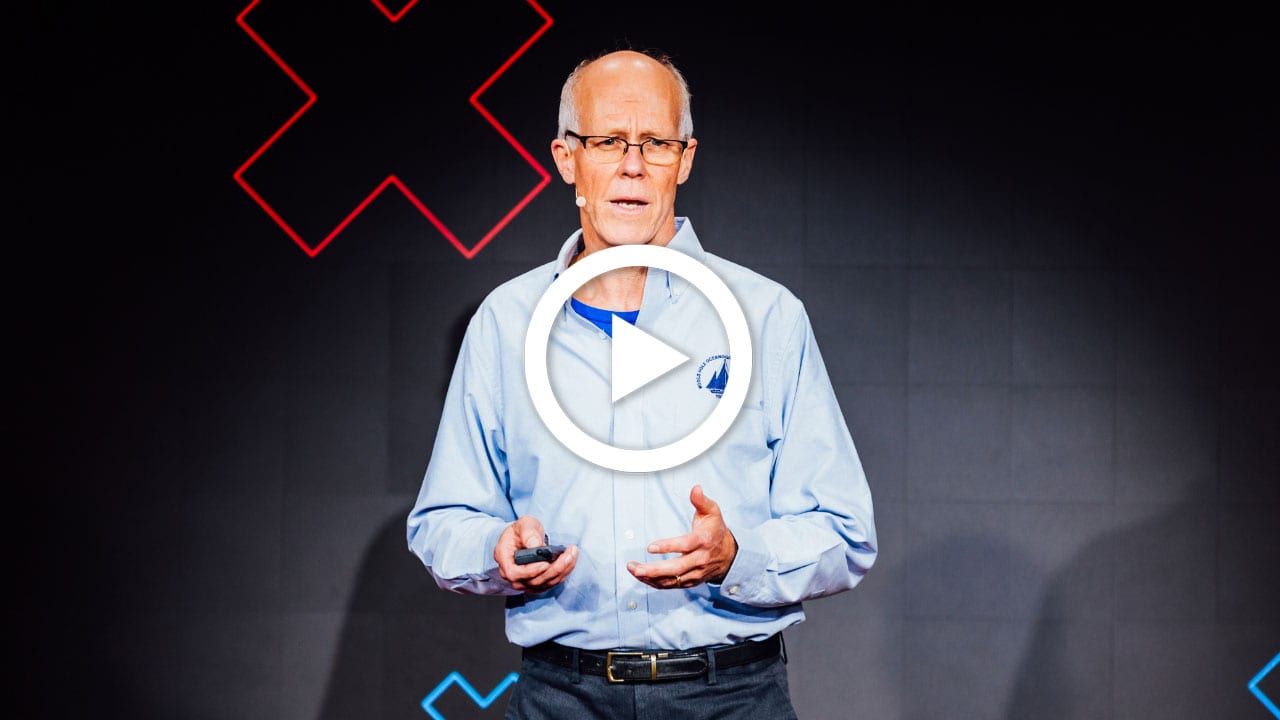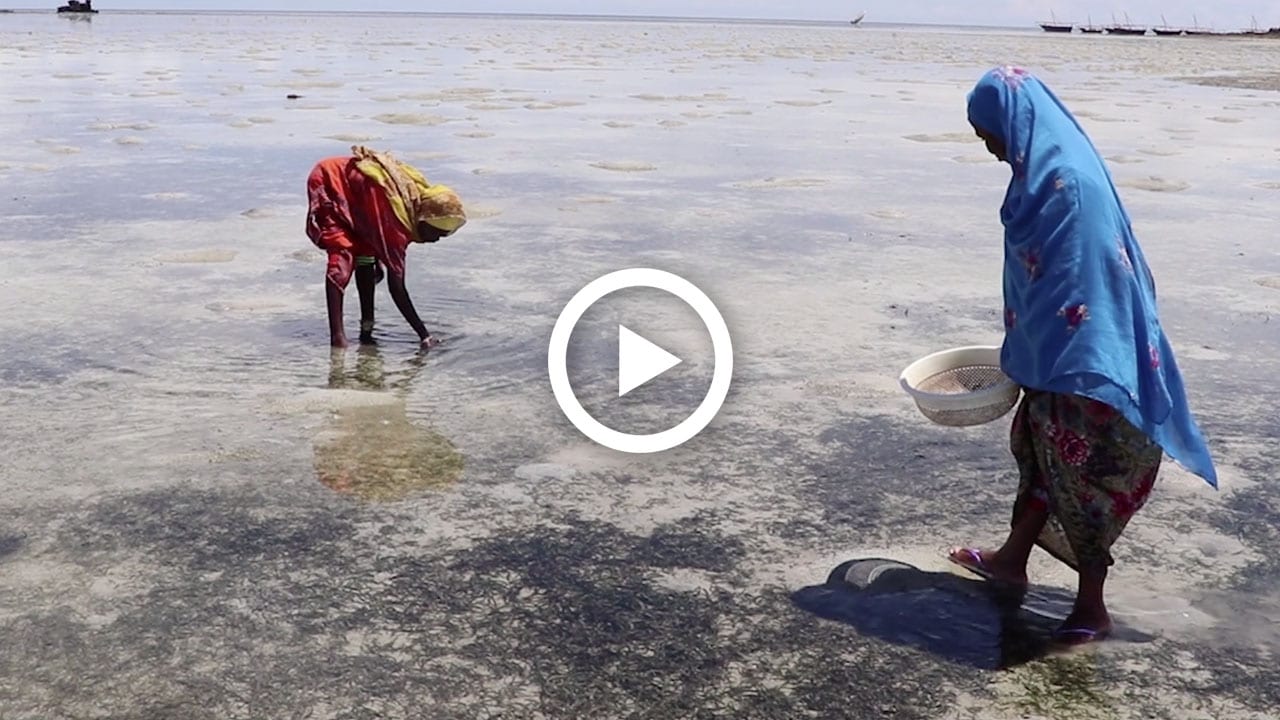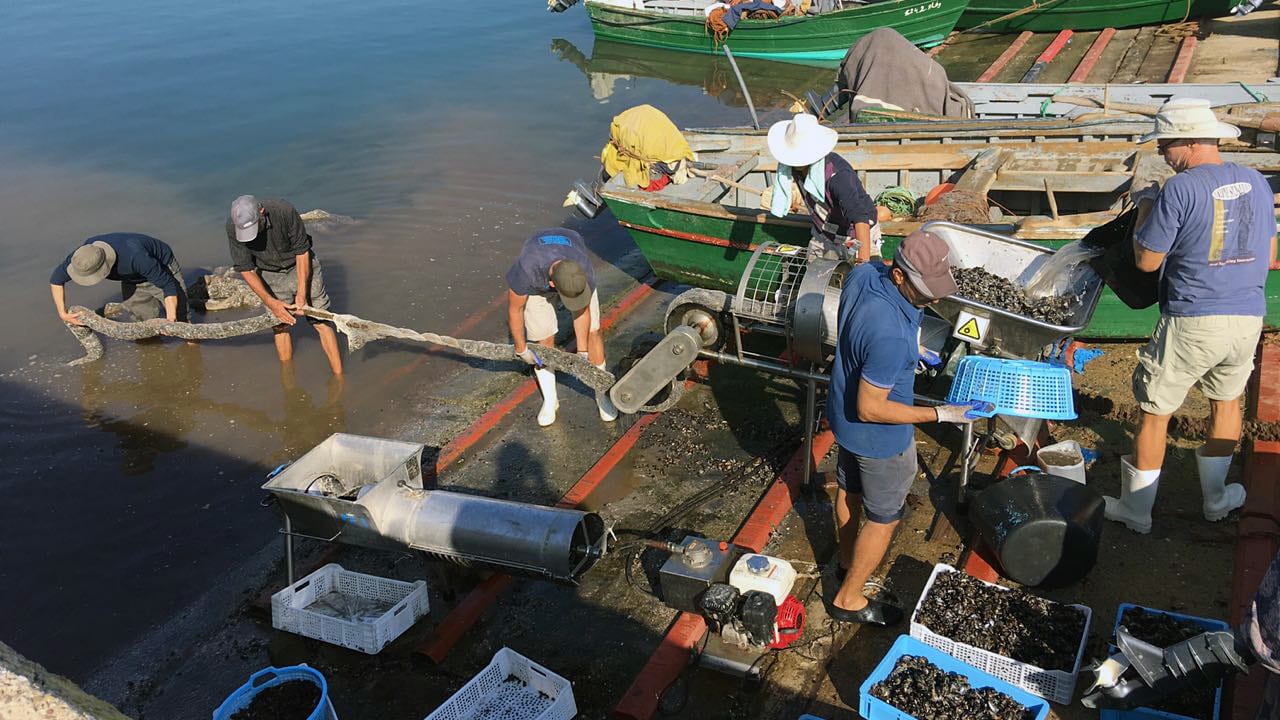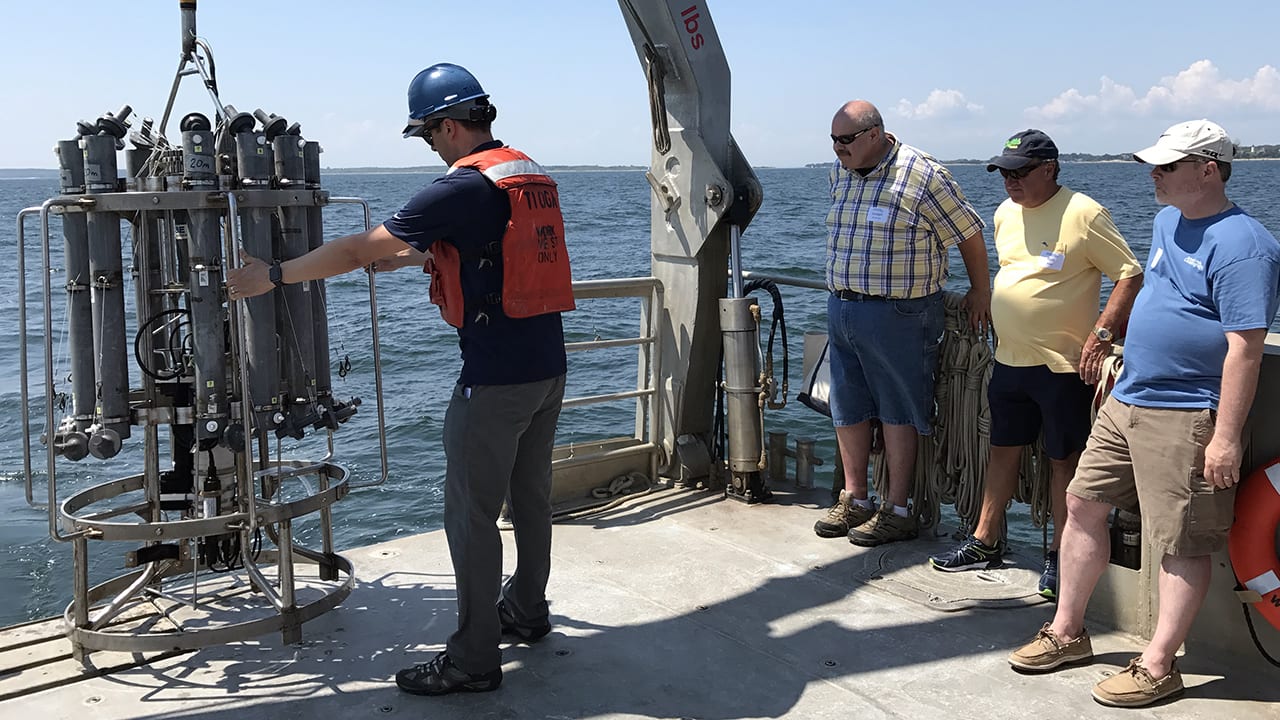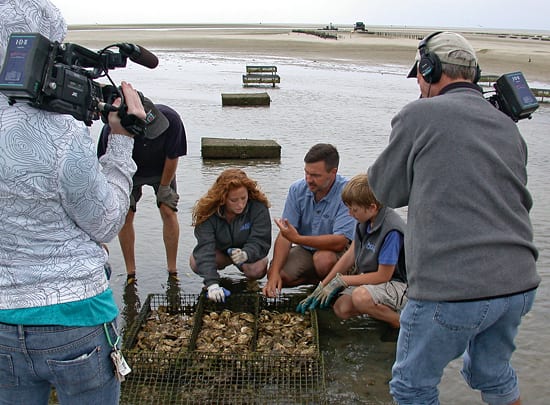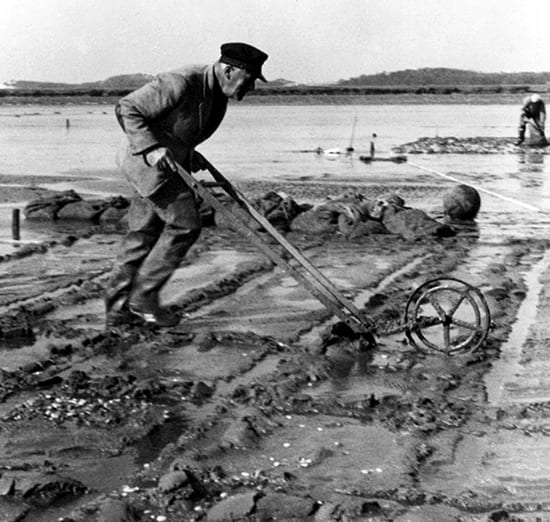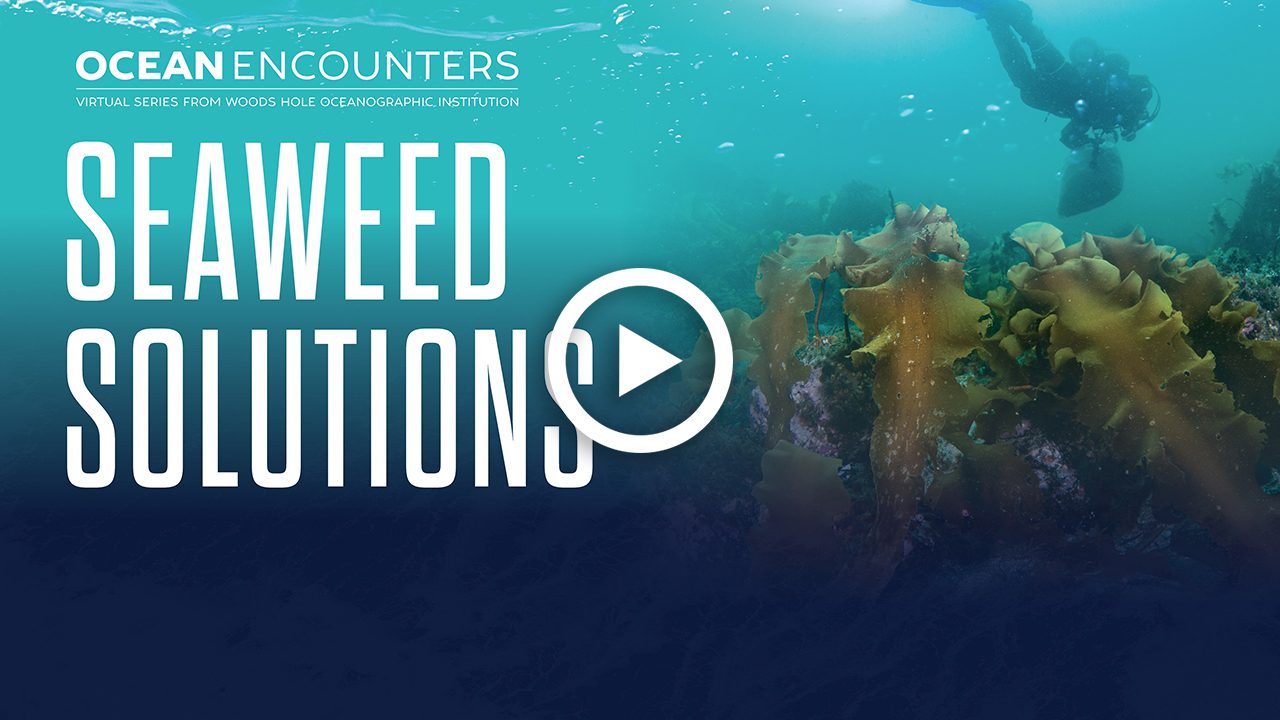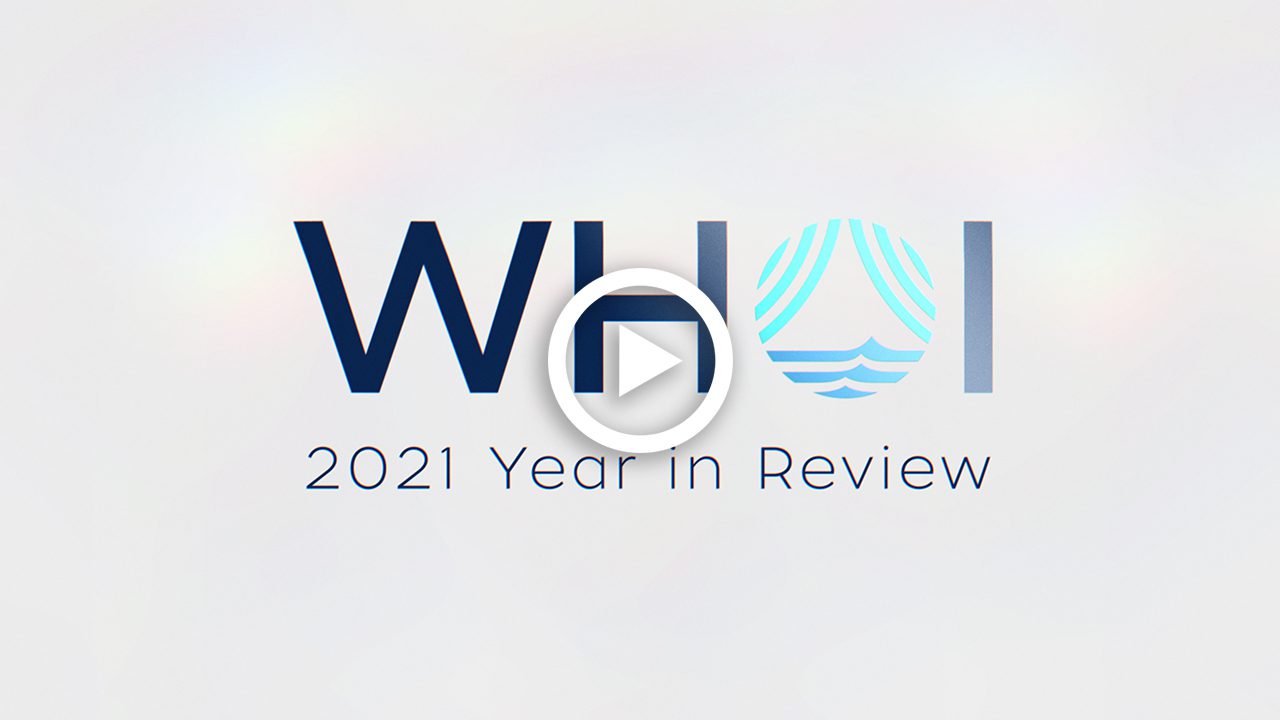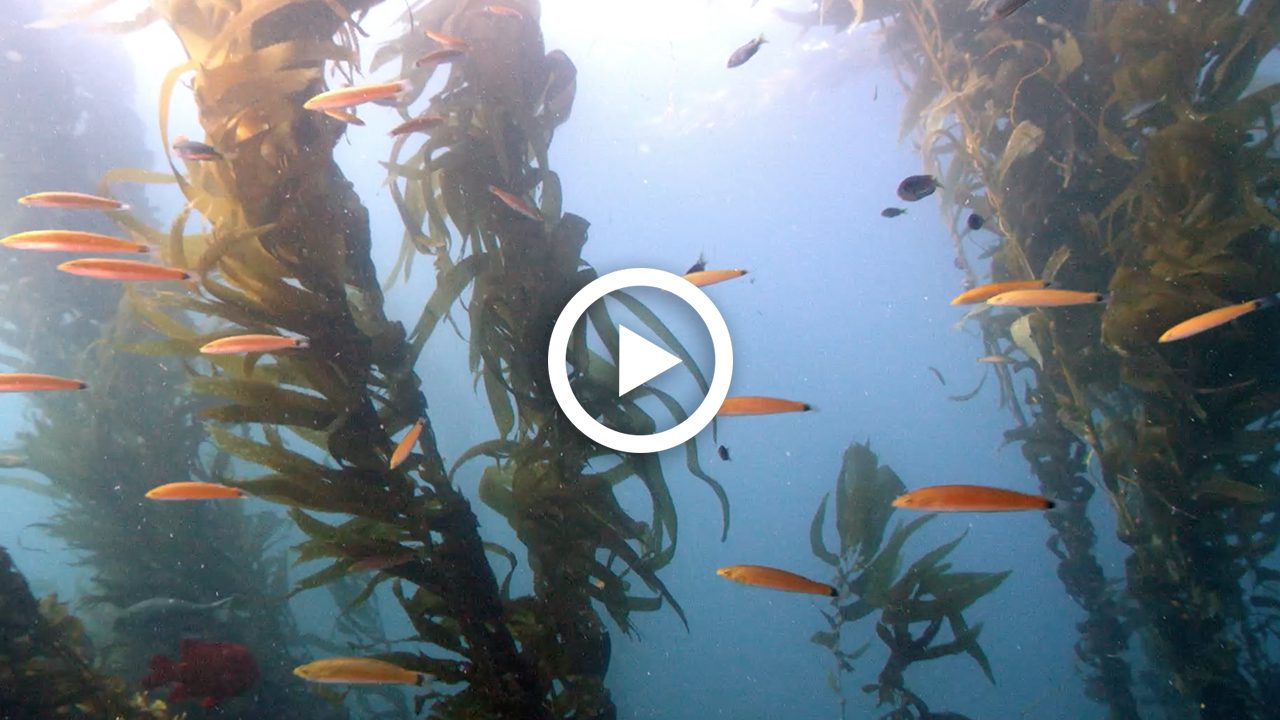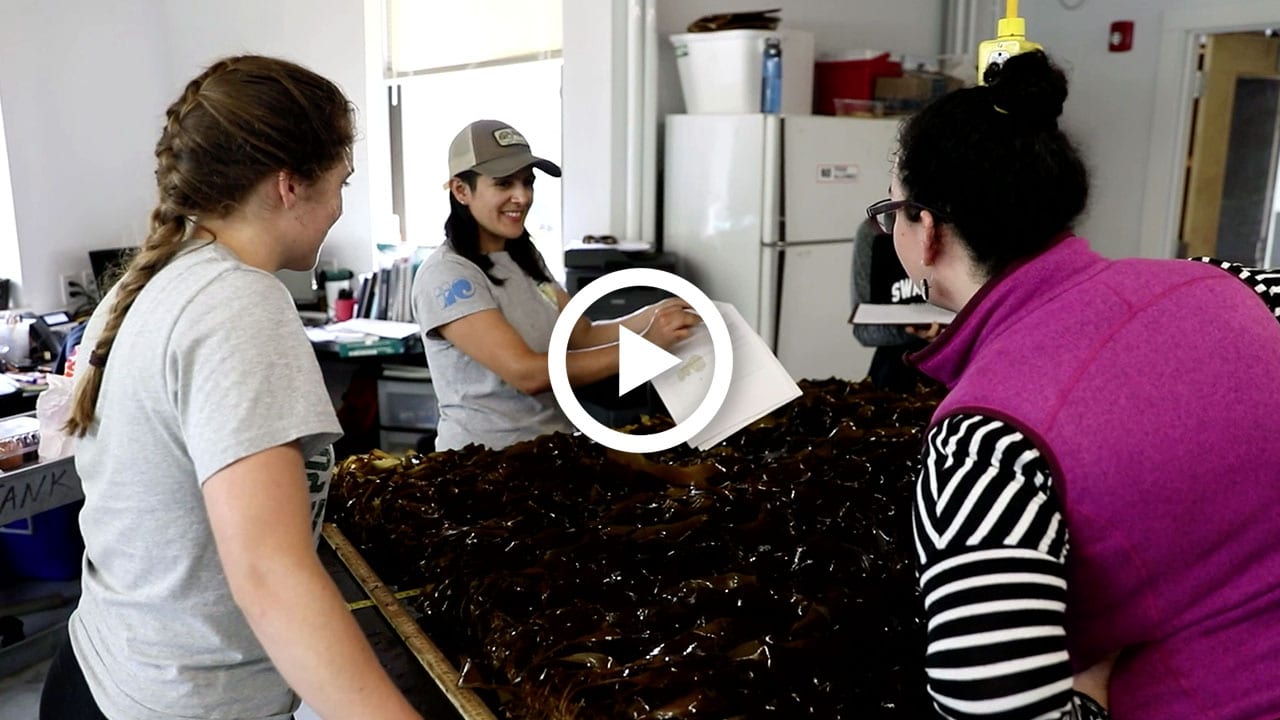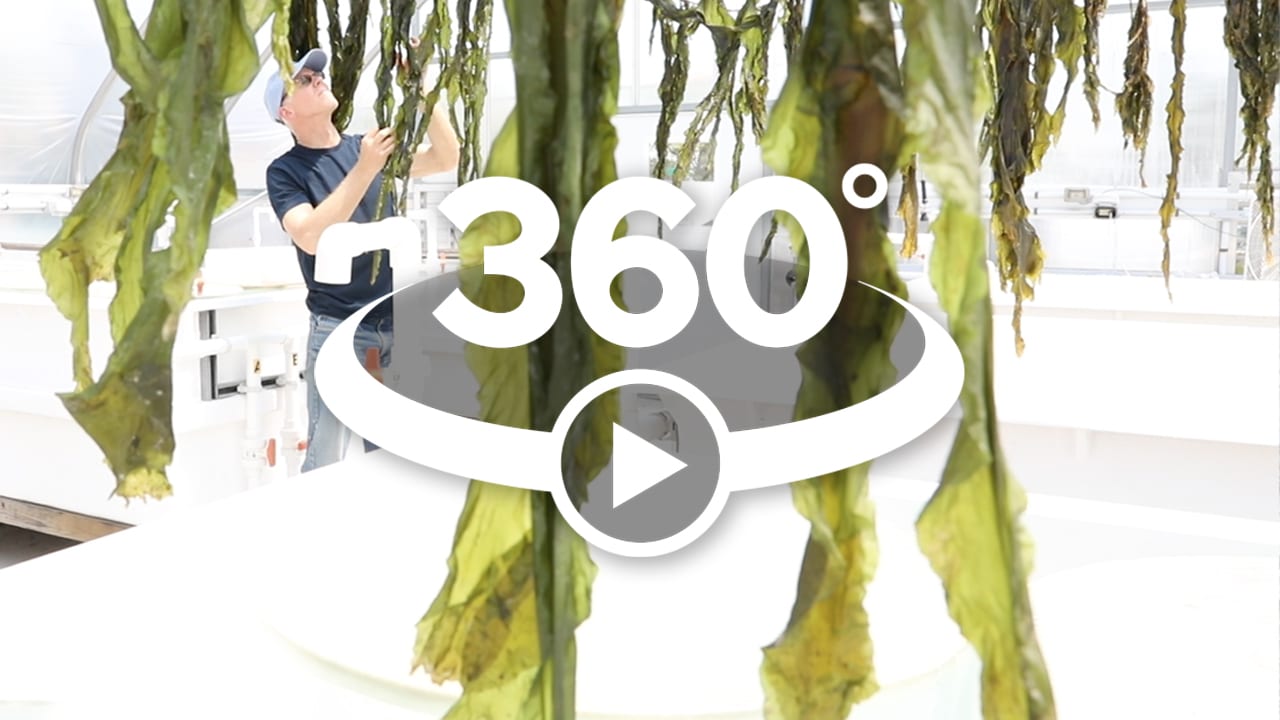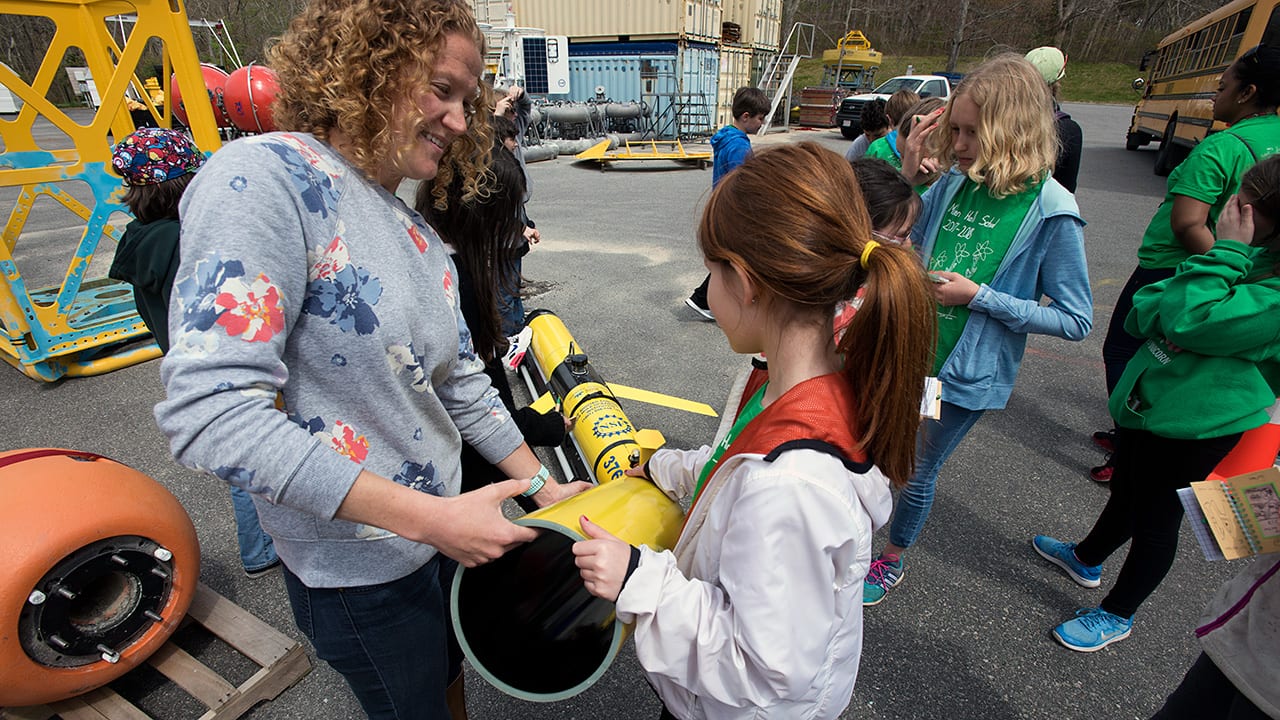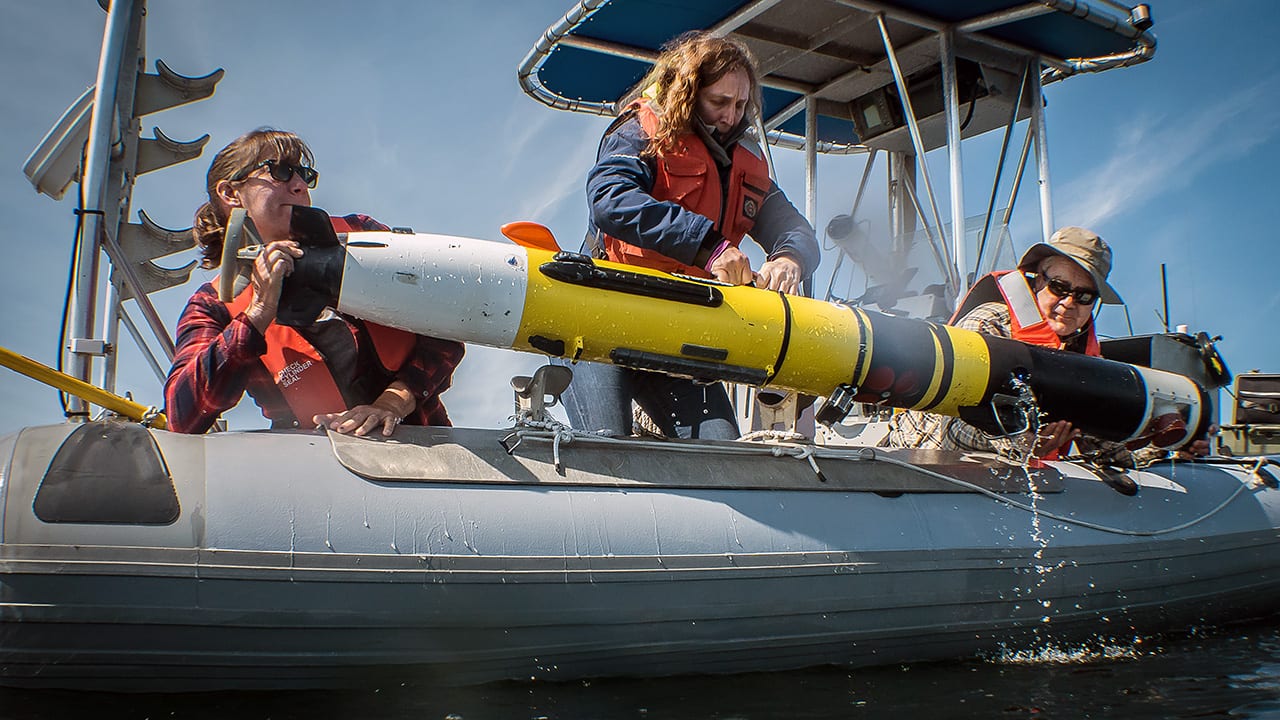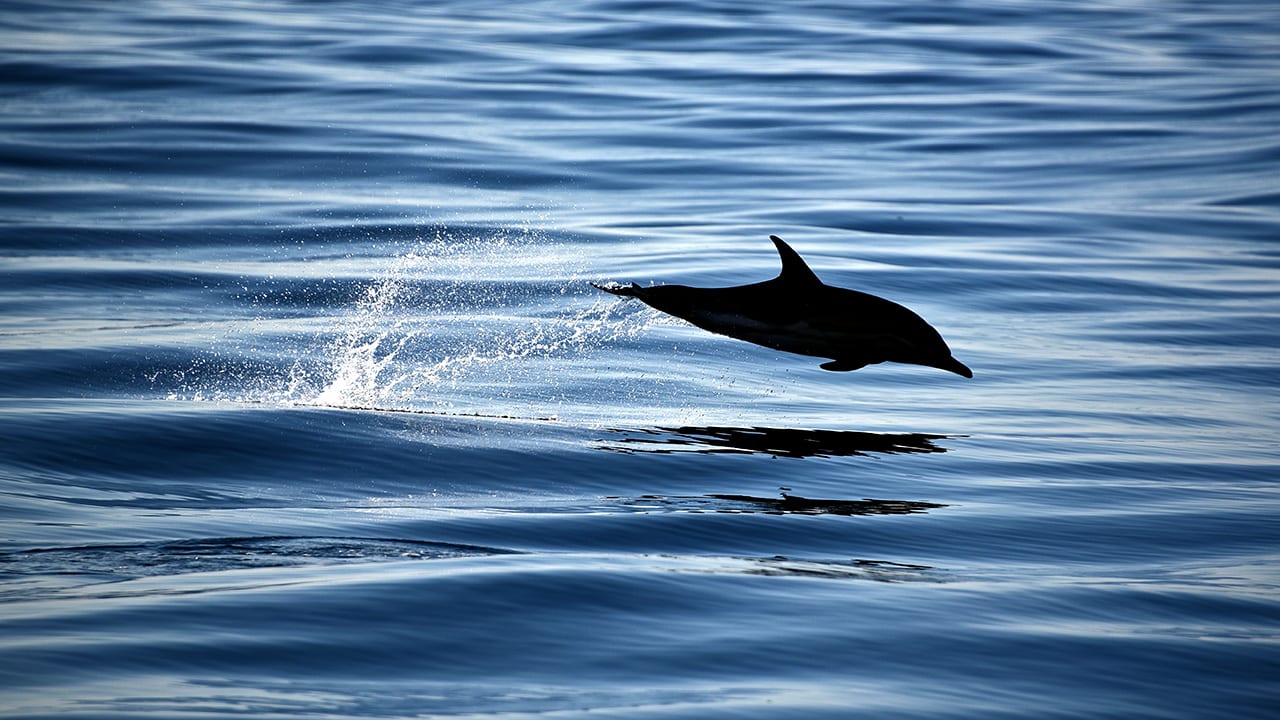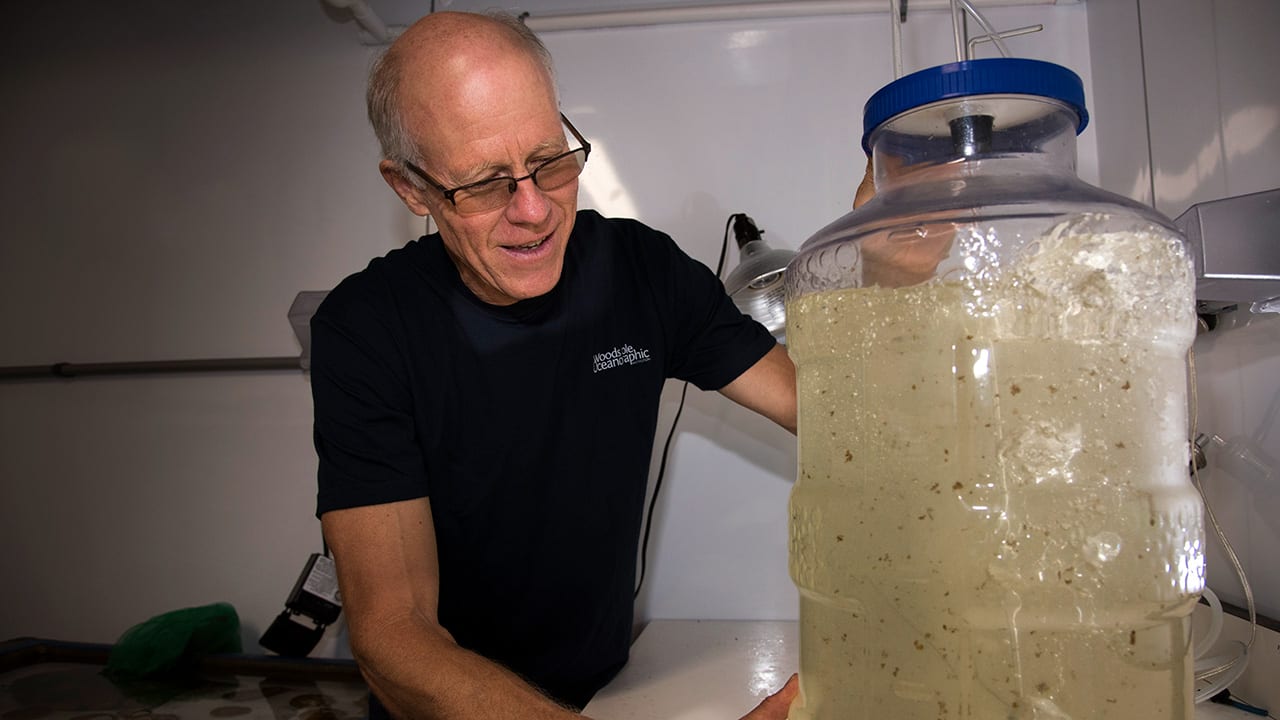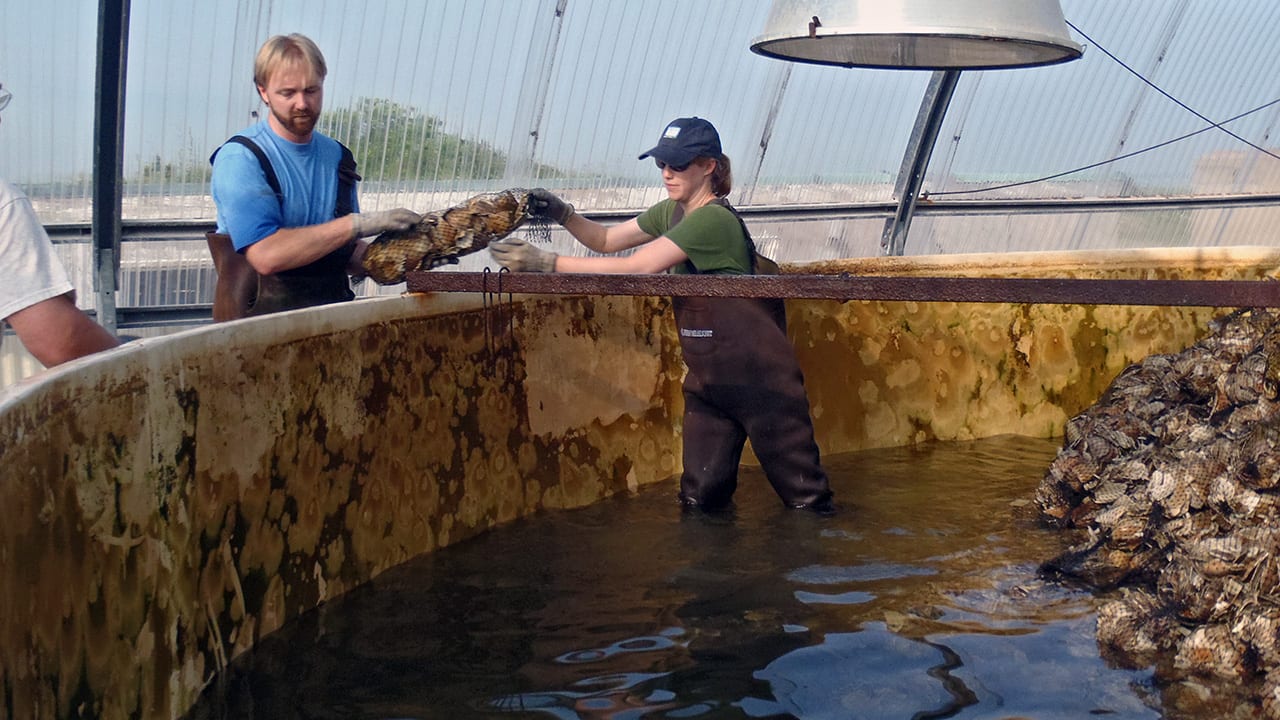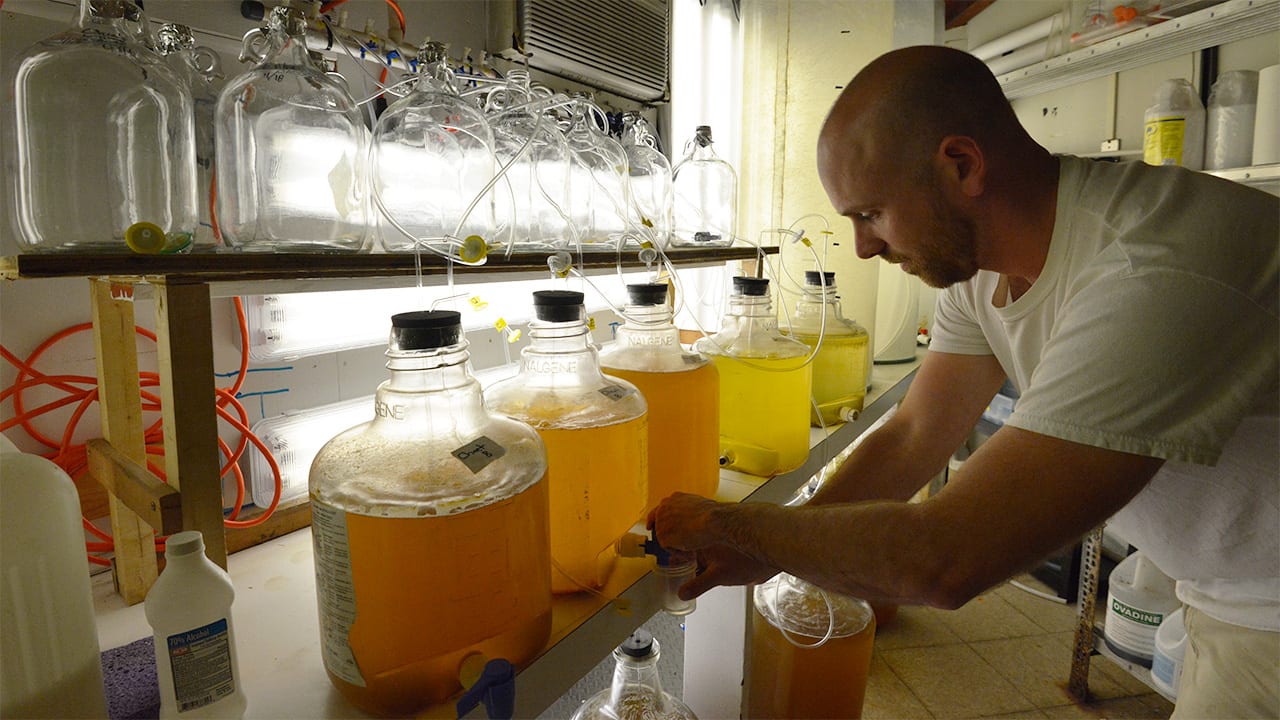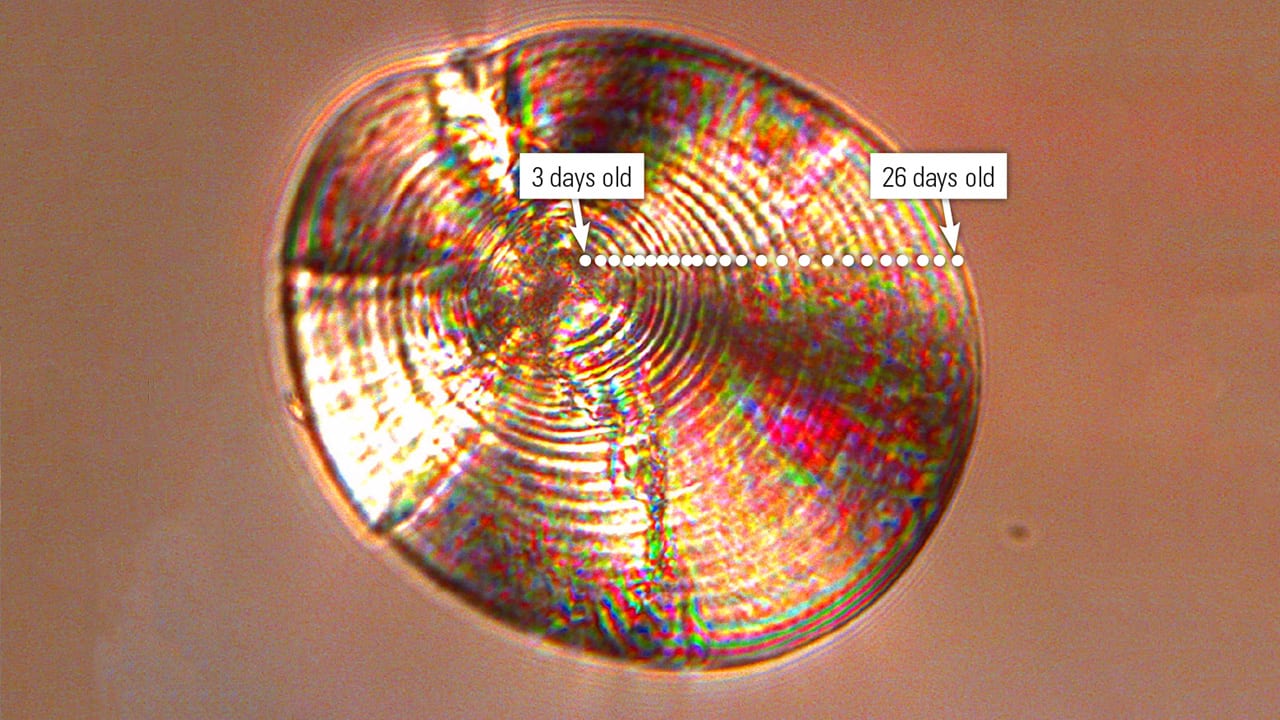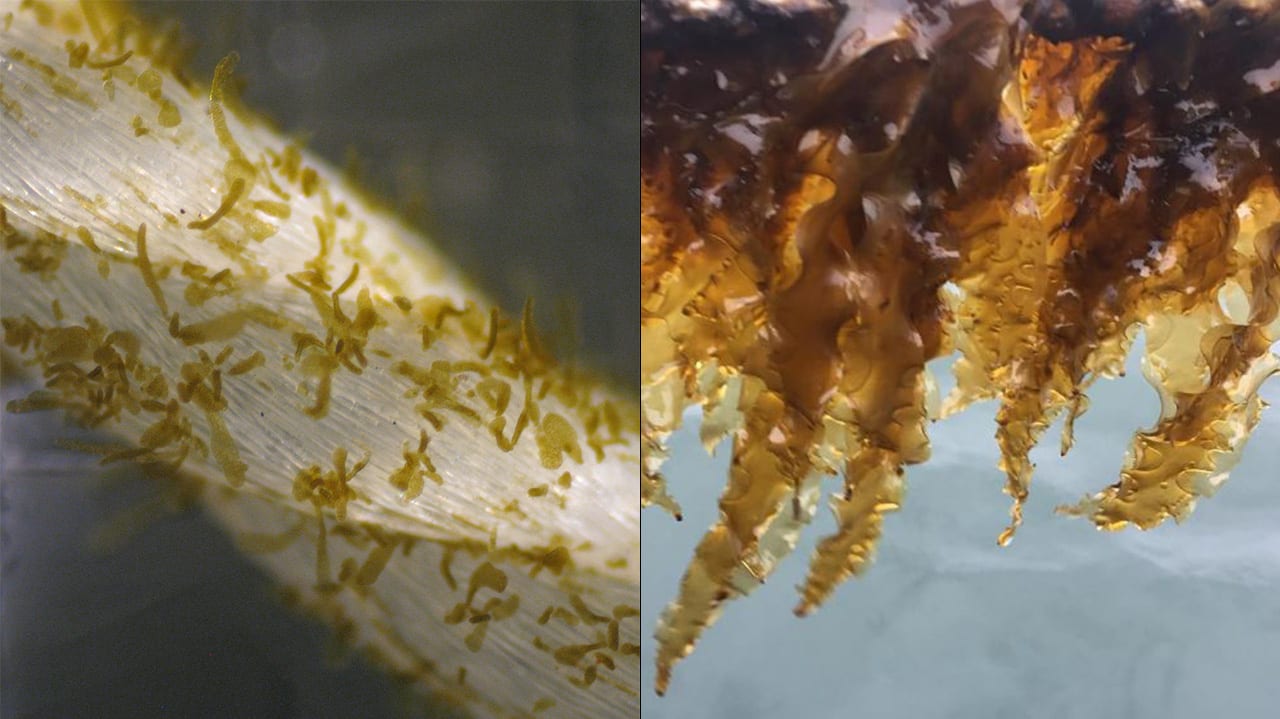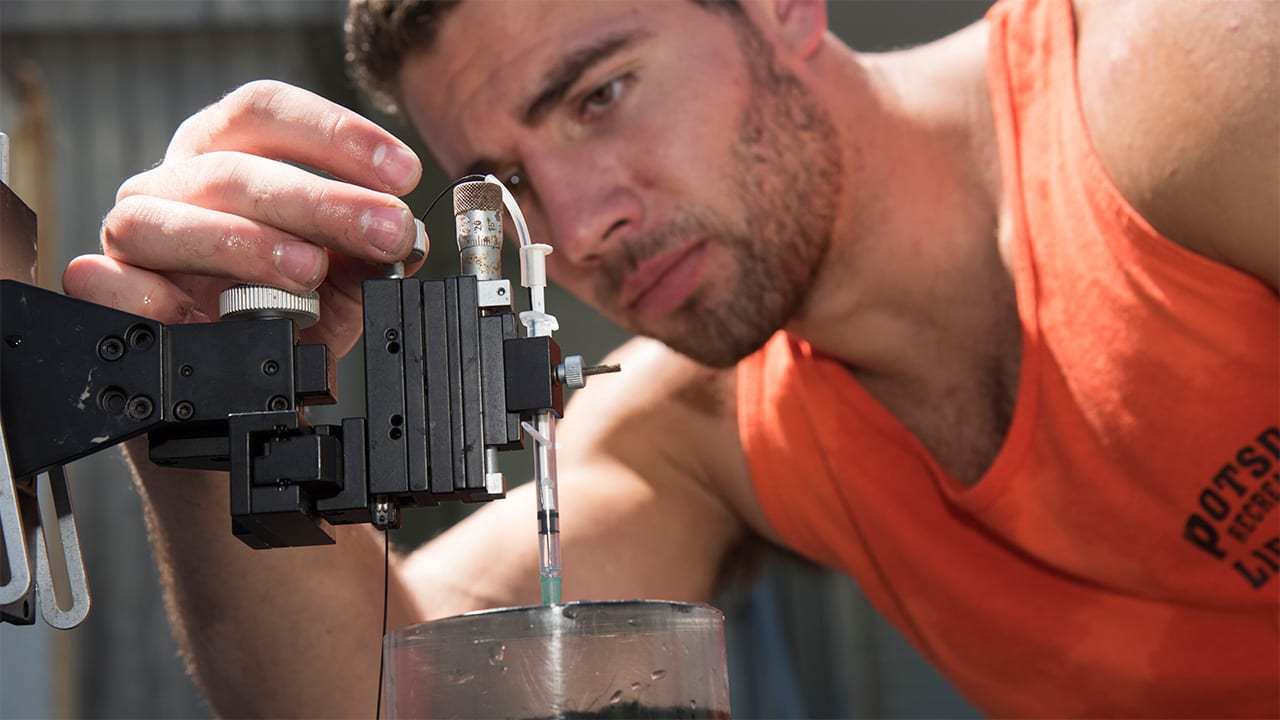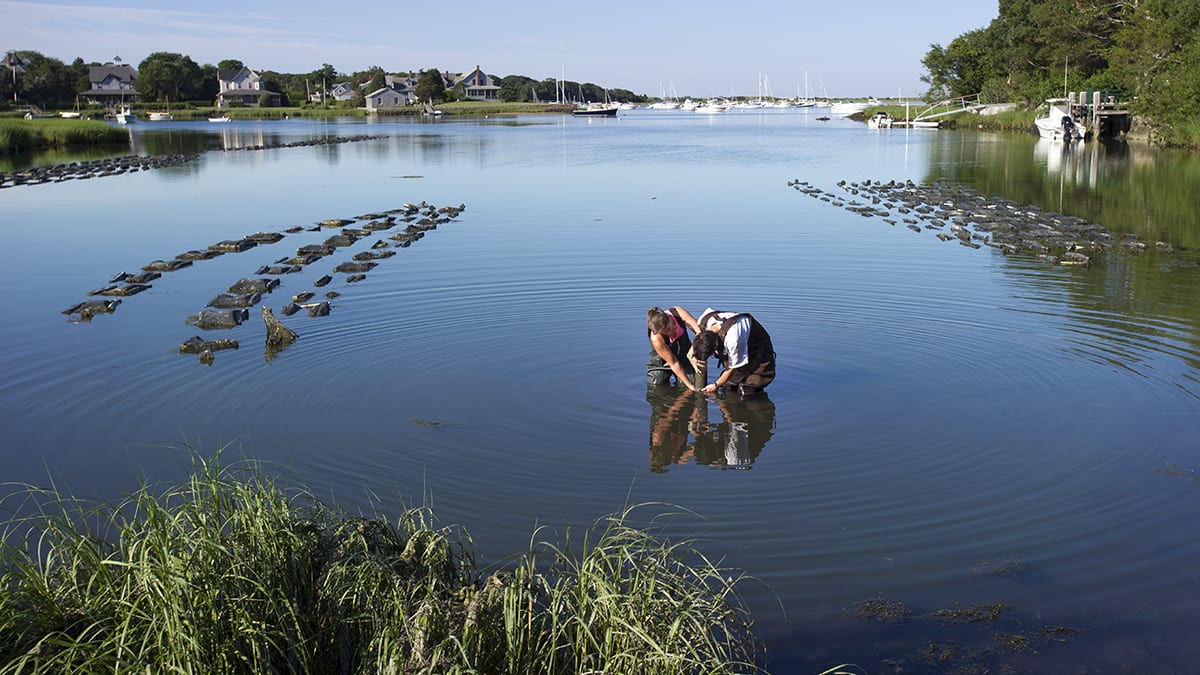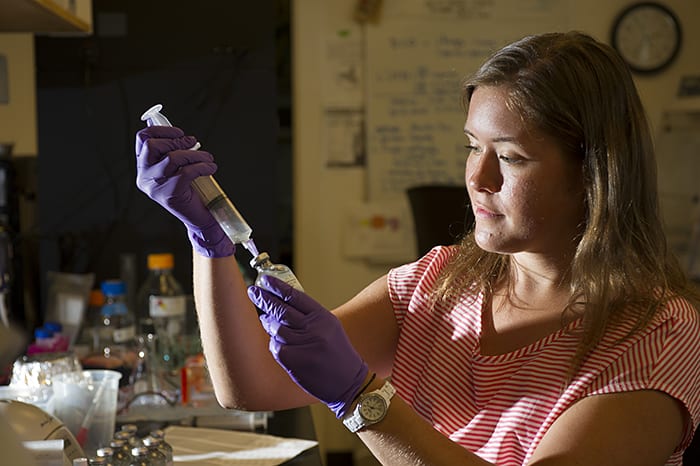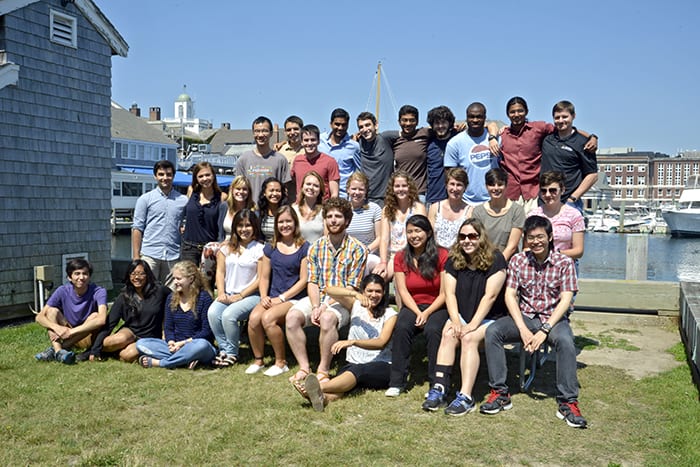Multimedia Items
Aquaculture pioneer Scott Lindell presents at TEDx Cambridge
Current farming and fishing practices are having devastating impacts on our climate and environment. Scott Lindell, research specialist at The Woods Hole Oceanographic Institution, reveals how marine aquaculture can sustainably feed the world’s growing population.
Read MoreImproving lives in East Africa through shellfish aquaculture
Shellfish aquaculture in the coastal waters of East Africa holds great potential to provide a stable, healthy source of protein and as well as new economic opportunities for entire communities, so long as up-to-date knowledge and equipment are available. To date, however, very little shellfish aquaculture is practiced in Zanzibar because of a lack of shellfish hatcheries, which provide shellfish seed to farmers, and a lack of technical knowledge about how to best farm and manage shellfish stocks.
Contribute to ProjectWHOI on behalf of ProjectWHOI Zanzibar:
https://projectwhoi.whoi.edu/home/zanzibar
With the help of this ProjectWHOI fundraiser, Hauke Kite-Powell will be able to increase seed production capacity at the hatchery to about 10 million clam seed per year, which should translate into additional income of $100/year for several hundred shellfish farmers in Zanzibar, many of whom are women supporting families. Hauke will also be able to send staff from U.S. shellfish growing companies supporting this project to Zanzibar to help train hatchery staff and growers. Most importantly, it will support the training of the next generation of hatchery operators and lay the foundation for expanding shellfish aquaculture along the coast of Tanzania and other parts of East Africa.
The funds raised in this campaign will enable Hauke Kite-Powell to supply much-needed equipment to bring the training hatchery up to full capacity and to support the travel of US shellfish farm trainers who will volunteer their time to train local technicians at the hatchery in Zanzibar.
Read MoreAquaculture Master Class
WHOI biologist Scott Lindell (far right) and research assistant David Bailey (center) traveled to Morocco recently, where they worked with members of the National Agency for the Development of Aquaculture…
Read MoreAquaculture on Cape Cod
Woods Hole Sea Grant director and WHOI marine chemist Matt Charette pulls a CTD onto the fantail of research vessel Tioga during a summer field trip for members of the…
Read MoreAquaculture with Aqua Kids
Woods Hole Sea Grant Aquaculture and Fisheries Specialist Bill Walton explains how oysters are raised to the co-hosts of TV’s Aqua Kids program, James and Molly. The cast and crew…
Read MoreSeeds of Aquaculture
From the late 1940s to the 1960s, a research team led by WHOI biologist Alfred Redfield investigated clam farming and the biology of softshell clams in a large harbor in…
Read MoreOcean Encounters: Seaweed Solutions
How scientists, ocean farmers, and policymakers are looking to kelp as a sustainable solution to some of the toughest issues facing our world today.
Read More2021 Year in Review
Re-live the best of 2021 with this montage showcasing just some of WHOI’s ocean science, technology, and engineering highlights. WHOI researchers are active in upwards of 800 projects around the world at any time, providing critical information about some of the most urgent challenges facing humanity and the planet we call home. As part of the WHOI community, we thank you for your dedication to our ocean, our future, and our planet. Best wishes for a happy and healthy 2022!
Read MoreSeaweed Solutions: WHOI leads project to develop new kelp strains
Aquaculture supplies more than half of the world’s seafood consumed by humans, with seaweed totaling 27% of annual global aquaculture tonnage. Now more than ever, seaweed farming is being viewed as a sustainable and efficient way to boost economies, provide nutritious food, and diversify ocean life. Take a look at the work of WHOI’s Scott Lindell, a research specialist in aquaculture technology, leading a research project to develop seaweed strains for commercial uses.
Read MoreSelective breeding seaweed
Using a mix of rulers, calipers, and measuring tapes, a dozen scientists—an aquaculture geek squad of sorts—are sizing up thousands of individual kelp blades recently harvested from offshore seaweed farms in New England in order to find the best specimens for selective breeding. It’s a long, exacting process, but for WHOI scientist Scott Lindell, it’s a key step toward turning the ocean crop into a global energy source for the future. The work will enable scientists to breed better kelp—strains that can tolerate the harsh offshore conditions in which they’re grown. The U.S. Department of Energy’s (DOE) Advanced Research Projects Agency-Energy (ARPA-E) is funding the research, as part of a broader effort aimed at advancing the mass production of seaweed for biofuels. The idea is simple: Grow kelp on a large scale in offshore farms and turn it into biofuels that could one day power millions of homes and cars.
Read More360˚ Video Time-lapse: Growing Better Biofuels
Check out what it takes to grow great seaweed! Take a 360 tour of WHOI’s Environmental Systems Laboratory as our researchers weigh, measure, and dry kelp from an experimental coastal farm to find out what characteristics could add up to an optimal crop for food, feed, and biofuels.
Read More360˚ Video: Kelp Phenotyping
Using a mix of rulers, calipers, and measuring tapes, a dozen scientists—an aquaculture geek squad of sorts—are sizing up thousands of individual kelp blades recently harvested from offshore seaweed farms in New England in order to find the best specimens for selective breeding. It’s a long, exacting process, but for WHOI scientist Scott Lindell, it’s a key step toward turning the ocean crop into a global energy source for the future.
Read MoreGetting a Grip on Gliders
Senior engineering assistant Diana Wickman shows part of an ocean glider to elementary school students from the Mullen-Hall School in Falmouth, Mass., during their annual Green Bus tour. Gliders and…
Read MoreKelpBot
WHOI engineer Amy Kukulya (left) and scientists Andone Lavery and Tim Stanton recovered a REMUS 100 “KelpBot” autonomous underwater vehicle they deployed with colleagues from the University of New England recently…
Read MoreHappy World Oceans Day
Today is World Oceans Day, a worldwide celebration of the ocean and the benefits it provides to everyone on our blue planet. It helps regulate our climate and our water cycle, supplies…
Read MoreLittle Gems
WHOI biologist Scott Lindell examines a container of gametophytes, germinal kelp plants, being prepared for use in a combined aquaculture experiment he is conducting. In six months, the millimeter-long young…
Read MoreResearchers’ Spat
Woods Hole Sea Grant Extension Agents Joshua Reitsma and Abigail Archer help distribute bags of shell that contain oyster seed (spat) to towns for municipal shellfish propagation programs. The Woods…
Read MoreLunch Buffet
WHOI research assistant David Bailey checks the algae used to feed shellfish larvae that he grows in WHOI’s Environmental Systems Lab. The shellfish are used by biologist Scott Lindell in…
Read MoreFish EarRings
Under a microscope, the otolith, or ear stone, of a larval fish—a river herring—shows concentric rings. Every day the fish adds a layer of calcium carbonate to their otoliths, tiny…
Read MoreBranching Out
In two months, young kelp less than 1 millimeter long (left) will grow nearly one foot (right) and, in six months, will be over six feet and ready for harvest.…
Read MoreOysters to the Rescue
Stonehill College undergraduate Dan Stone measures oxygen in a sediment core taken this past summer from a coastal pond in Falmouth. Stone works for chemist Dan Rogers, who is collaborating…
Read MoreSummer Sampling
WHOI summer student fellow Claudia Mazur (left), of Mount Holyoke College, and guest student Alec Cobban, of Dartmouth College, sampled sediments in West Falmouth Harbor in August 2015. Both spent…
Read MoreNatural Filters
Oysters are filter feeders that dine on free-living algae called phytoplankton by sucking in water over their gills. In the process, they also improve water quality by removing particles that contain…
Read MoreBack to School
WHOI’s 2015 class of Summer Student Fellows may be gone (back to school), but they are certainly not forgotten. This year’s group of 32 undergraduates included seven international students from India,…
Read More
